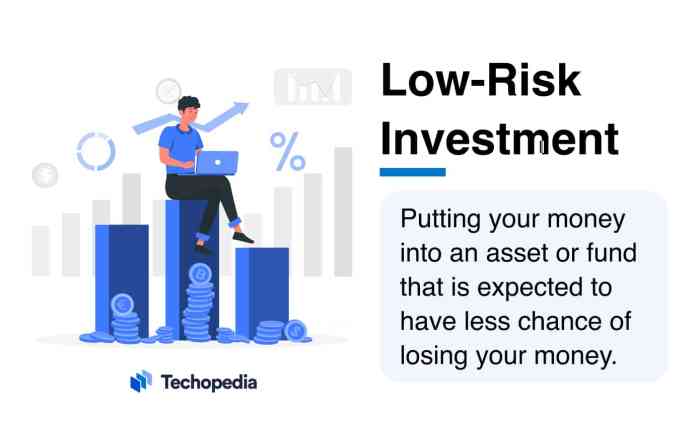Low-risk investment options in the building industry: A Comprehensive Guide
Delving into the realm of low-risk investment options in the building industry unveils a landscape rich with opportunities and potential. From real estate investment trusts to government bonds, the choices are diverse and intriguing. Let's explore the nuances of each option and discover the path to secure investments in the ever-evolving building sector.
Different types of low-risk investment options in the building industry

Investing in the building industry offers several low-risk options that can provide stable returns over time. These investments are generally considered safe due to the steady demand for real estate and construction projects. Let's explore some of the different types of low-risk investment options available in the building sector.
Rental Properties
Rental properties are a popular choice for low-risk investments in the building industry. By purchasing residential or commercial properties and renting them out, investors can generate a steady stream of rental income. The value of the property may also appreciate over time, providing additional returns.
Real Estate Investment Trusts (REITs)
Real Estate Investment Trusts (REITs) are another low-risk investment option in the building industry. REITs allow investors to invest in real estate properties without having to buy or manage the properties themselves. These trusts generate income through rental payments and property appreciation, offering a relatively stable return on investment.
Real Estate Crowdfunding
Real Estate Crowdfunding platforms have gained popularity as low-risk investment options in the building industry. Investors can pool their funds with others to invest in real estate projects, such as development or renovation. Crowdfunding platforms provide access to a diversified portfolio of properties, reducing individual risk.
Real Estate Mutual Funds
Real Estate Mutual Funds are another low-risk investment option that allows investors to invest in a portfolio of real estate assets. These funds are managed by professionals who allocate investments across various properties, providing diversification and potentially higher returns compared to individual property investments.
Government Bonds Backed by Real Estate Assets
Government bonds backed by real estate assets are considered low-risk investments as they are backed by the government's creditworthiness and real estate collateral. These bonds offer a fixed interest rate and are relatively stable, making them an attractive option for risk-averse investors in the building industry.
Real estate investment trusts (REITs) as a low-risk investment in the building industry
Real estate investment trusts (REITs) are companies that own, operate, or finance income-producing real estate across a range of property sectors. They allow investors to invest in real estate without having to buy, manage, or finance any properties themselves. REITs are required to distribute at least 90% of their taxable income to shareholders in the form of dividends, making them an attractive option for investors seeking steady income.
Examples of successful REIT investments in the building industry
- Simon Property Group (SPG): Simon Property Group is the largest publicly traded REIT in the United States and specializes in shopping malls and retail properties. Despite challenges in the retail sector, SPG has shown resilience and continues to provide attractive returns to investors.
- Prologis (PLD): Prologis is a global leader in logistics real estate, owning and operating warehouses and distribution centers. With the rise of e-commerce and the increasing demand for logistics facilities, Prologis has seen significant growth in its portfolio and stock value.
- Equinix (EQIX): Equinix is a REIT that focuses on data centers and interconnection services. As the demand for data storage and cloud services continues to grow, Equinix has capitalized on this trend and delivered strong returns to investors.
Tax implications and potential drawbacks of investing in REITs
- Tax implications: REIT dividends are generally taxed at ordinary income tax rates, which can be higher than the tax rates on qualified dividends from other investments. However, some portion of REIT dividends may qualify for the lower tax rates applicable to qualified dividends.
- Potential drawbacks: REITs are subject to interest rate risk, market risk, and specific industry risks related to the types of properties they own. Additionally, REITs may be impacted by economic downturns or changes in real estate market conditions, affecting their performance and dividends.
Government bonds and securities as low-risk investment options
Government bonds are considered a low-risk investment avenue in the building industry due to their stability and reliability. These bonds are issued by the government to raise funds for various projects, including infrastructure development, which directly impacts the building industry.
Investing in government bonds can provide a steady income stream through interest payments and the return of the principal amount at maturity.
Key benefits and risks associated with investing in government bonds
- Benefits:
- Stability: Government bonds are backed by the government, making them a relatively safe investment option.
- Regular income: Investors receive interest payments at fixed intervals, providing a steady income stream.
- Diversification: Government bonds can help diversify a portfolio and reduce overall risk.
- Stability: Government bonds are backed by the government, making them a relatively safe investment option
- Risks:
- Interest rate risk: Fluctuations in interest rates can affect the value of government bonds.
- Inflation risk: Inflation can erode the real value of fixed interest payments over time.
- Default risk: While rare, there is a small possibility of the government defaulting on its bond payments.
Comparison of stability and returns of government securities with other low-risk options
Government securities are known for their stability and lower risk compared to other investment options in the building industry. While the returns on government bonds may be lower than riskier investments, they offer a safe haven for investors looking to preserve capital and generate a reliable income.
In comparison to real estate investment trusts (REITs) or other low-risk options, government bonds provide a secure investment vehicle with predictable returns and lower volatility.
Investing in mutual funds with a focus on the building sector

Investing in mutual funds can provide a low-risk way to gain exposure to the building industry. By pooling money from multiple investors, mutual funds offer diversification and professional management, making them a popular choice for those looking to invest in real estate and construction without taking on significant risk.
Mutual Funds Specializing in Real Estate and Construction
- One example of a mutual fund specializing in real estate is the Vanguard Real Estate Index Fund. This fund invests in real estate investment trusts (REITs) and companies involved in real estate development, management, and ownership.
- For those interested in construction, the Fidelity Select Construction and Housing Portfolio focuses on companies involved in the construction and housing sectors, providing exposure to residential and commercial building activities.
Diversification Benefits and Management Fees
Investing in mutual funds focused on the building sector can help investors spread their risk across a variety of companies within the industry. By holding a mix of real estate and construction-related assets, investors can reduce their exposure to the performance of any single company.
However, it's important to consider the management fees associated with mutual funds. These fees cover the costs of managing the fund and can vary depending on the fund's structure and approach. Investors should carefully review the fee structure and performance history of a mutual fund before making an investment decision.
Closing Summary

In conclusion, navigating the landscape of low-risk investment options in the building industry requires a blend of caution and strategic planning. By understanding the characteristics, benefits, and potential returns of each option, investors can make informed decisions to safeguard their financial interests in the dynamic world of construction and real estate.
Popular Questions
What are the key benefits of investing in REITs?
REITs offer a diversified exposure to real estate assets without the need for direct property ownership. They also provide regular income streams through dividends.
Are government bonds in the building industry considered low-risk?
Government bonds are generally perceived as low-risk due to the backing of the government, making them a stable investment option even in the building sector.
How do mutual funds specializing in real estate contribute to low-risk investments?
Mutual funds focusing on the building sector provide diversification across multiple real estate assets, reducing individual investment risks while offering professional management.



